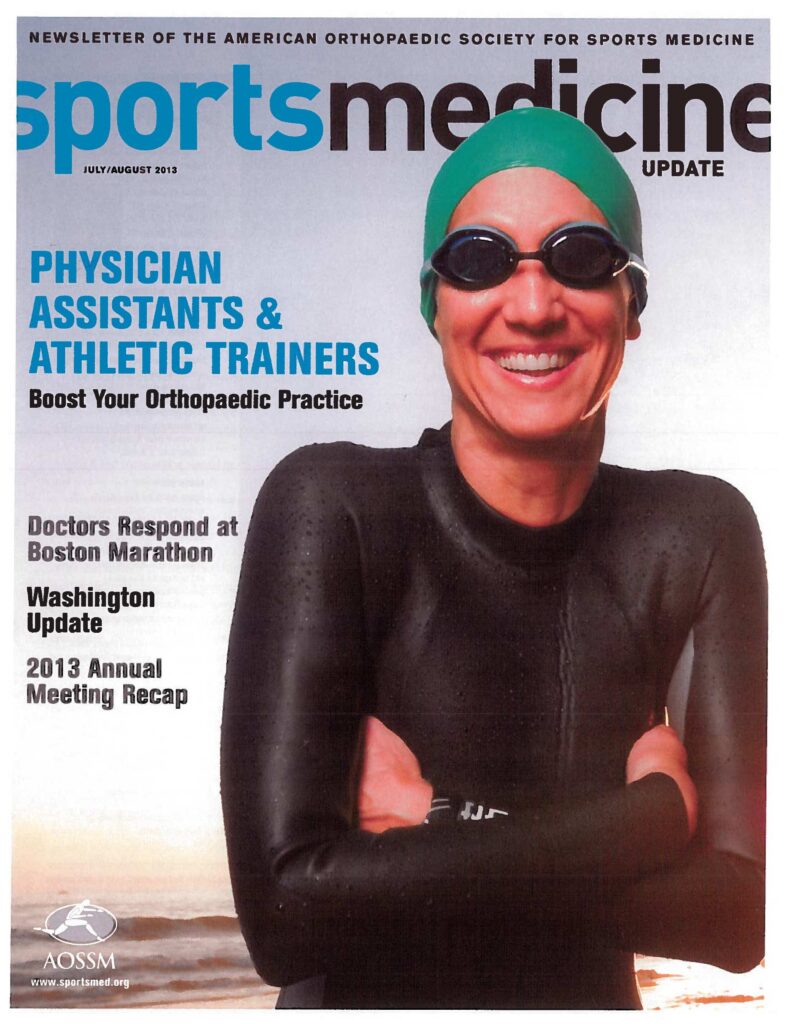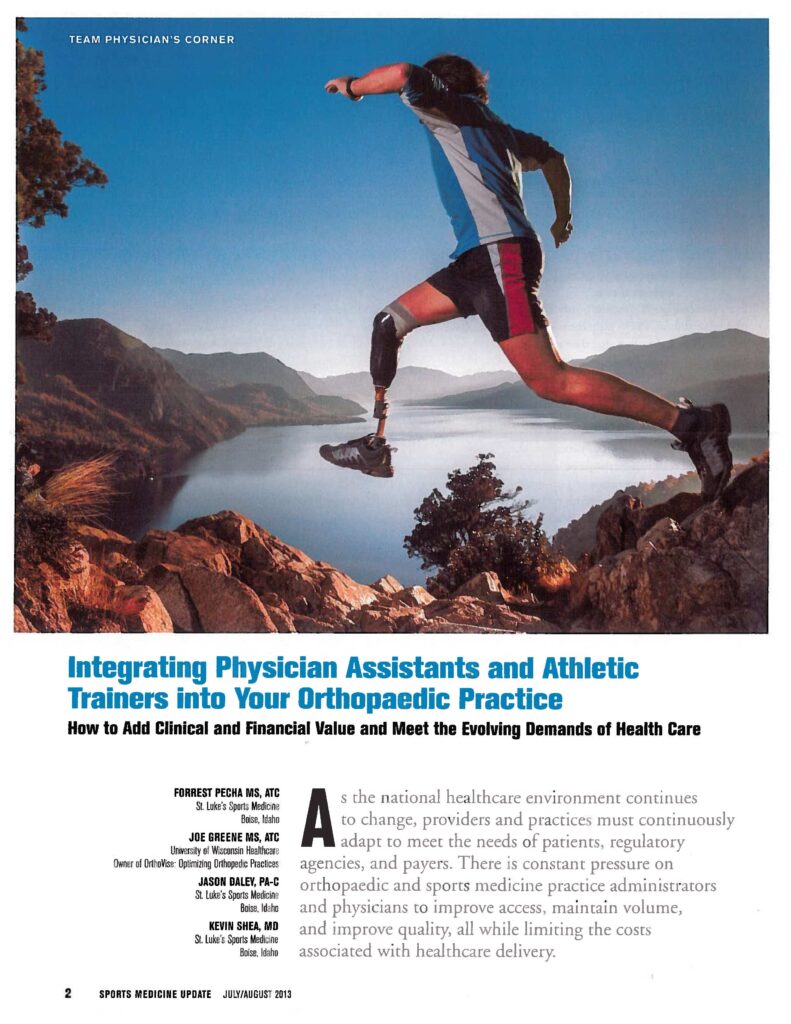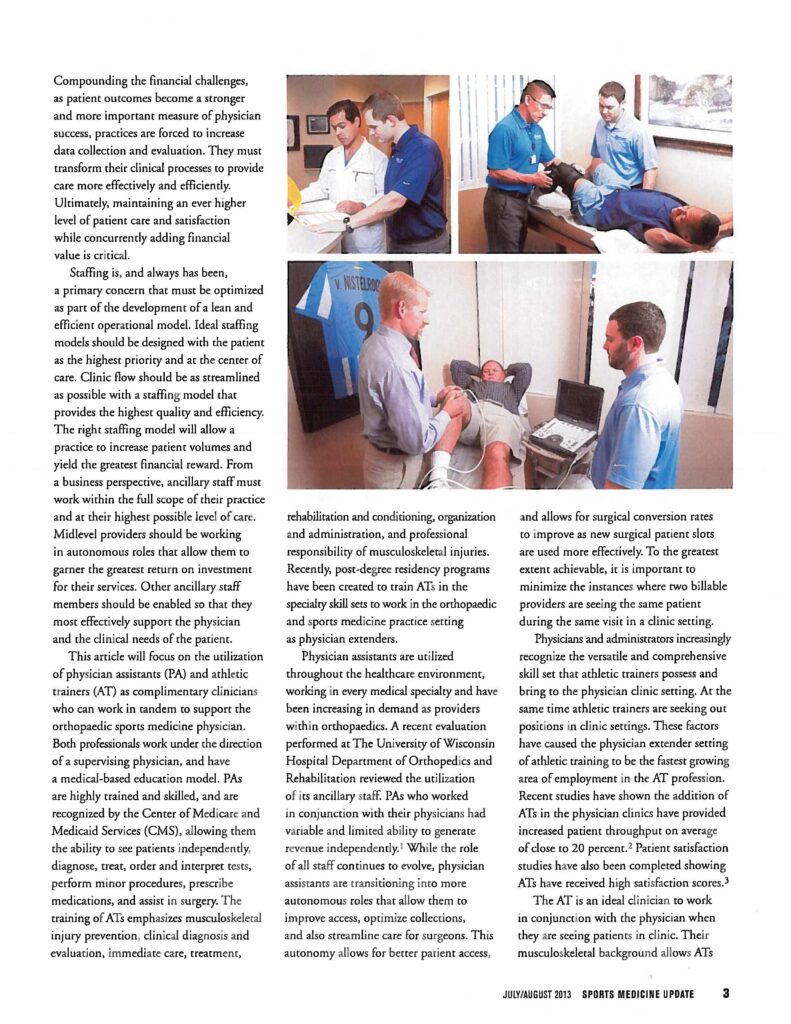
Why would athletic training decide to move educational requirements to graduate level baseline?
As noted in the article from one short decade ago in 2013; the preeminent physician journal, American Orthopaedic Society of Sports Medicine (AOSSM) published the positive impact both Physician Assistants and Athletic Trainers have within the physician’s clinical setting with two diverse roles and responsibilities.
Why merge them educationally?
In my short 25+ year career in sports medicine, specifically athletic training; the professional medical model of education and credentialing has increased from two pathways at the bachelor’s level of higher education to one graduate degree required today:
Late 1990s-early 2000s: Bachelor’s Degree
2023: Master’s Degree
The baseline to be eligible to practice professionally as an Athletic Trainer (AT) now requires a person to complete a graduate degree.
What changed?
The Major of Athletic Training; as well as, the didactic and clinical requirements of medical model of education did not change. The domains remain musculoskeletal injury prevention, clinical evaluation and diagnosis, immediate care, treatment, rehabilitation and conditioning, professional development, organization and administration.
Stop!
Why would you transition a degree with no content changes from a Bachelor’s Degree to a Master’s Degree minimum?
How much extra educational cost?
How much time lost to return on educational investment for an aspiring health care provider?
What is the cognitive and clinical experiential delay in these healthcare providers’ ability?
Today, an interested person will need a master’s degree from an accredited institution of higher learning to become nationally certified and licensed in states to practice as an athletic trainer.
In fact, and in retrospect; the reason I retired and moved on from Program Director of Athletic Training at the University of Utah after 10 years of service in that role in 2015; well, besides my chair at the time telling me; “Dr. Brad, you should know better, it’s not about the students.”


It was the brain drain, time, and political capital required of the few PhDs and program directors with athletic training education tasked to administratively make this change.
How about doing that in a Research 1 university as a faculty member? Try to write and administer a quality NIH grant, teach a full graduate and undergraduate course load, and make that programmatic transition at the flagship institution all at the same time.
Heck, what if your college or university did not have a master’s degree program like my undergraduate program that has now ceased to exist?
Wouldn’t all the people of athletic training education programs and the pioneers in the field that are employed within those hundreds of bachelor level accredited programs be terminated professionally once the transition is formalized?
Please, I get it. Yet, do not agree with it.
Physical Therapy (PT) is now a Clinical Doctorate (ridiculous) and costs into the 100s of thousands of dollars to get to the level of credentialing today.
Furthermore, PT is now adding specialty certifications or some other layer of detail, cost, and years before you can make any independent decisions as a healthcare provider.
At that time and ironically when I was ending my career as Director of Athletic Training at the U; my therapist said that the keynote White Paper RMATA presentation I gave in Provo, Utah was my Swan Song.
The presentation was solely focused on the White Paper used to drive the paper ceiling transition from Bachelors to Masters baseline degree required in Athletic Training.
You see, my presentation’s content was strictly reporting the first year athletic training students’ (ATS) comments and feedback to the White Paper during the Professional Development course that I taught at the time:
Assignment:
Please Read, Review, and Provide your Comments from each point of the White Paper.
This was the students’ first assignment in the course.
The Swan Song; or the professional presentation I gave that morning in Provo consisted of listing each of the White Paper Recommendations; followed by the first year students’ comments, criticisms, and honest responses.
Please realize, I disagreed for years and argued against the transition from bachelor’s degree to graduate degree baseline requirement for Athletic Training prior to that public presentation. I could not support the White Paper’s findings as the evidence was scarce and/or absent.
Felt in my core that it was counter to the best interests to the profession of athletic training, the healthcare available to vulnerable populations/people, and societal wellbeing at large.
The outcome of the transition to master’s degree was known by me before the presentation that day; yet, passionately said it publicly any way.
The transition was made to match the graduate level degree baseline required of PT, PA, NP, and OT to meet federal legislation (ie. CMS reimbursement).
You see; at that time about a decade ago in medical professional education and training; Athletic Training was different, quality programs were prevalent, and medically unique.
Athletic training was the only bachelor’s level degree and fantastic feeder to post-graduate specialty pathways of credentialing, healthcare, and other medical professions of interest (MD, DO, PA, NP, etc)
I left the battle that was unwinnable in 2015. I did not want to waste time in something I did not agree and relent to living a false self professionally.
The subsequent drip of decreasing athletic trainers into the future, as well as, the subsequent destruction of the post-professional education programs that nurtured evidence based medicine, independent clinical decision making, and research is now lost and will be the forthcoming outcome.
Learning content is delayed and healthcare professionals in all fields including non-emergency doctors are now fearful to make confident independent decisions until later in their professional lives. Furthermore, the individual that just wants to help and serve others within healthcare are now burdened by spending more money and valuable time as opposed to earning money during prime adult years.
Best for the patient, perhaps not!
True, well over 50% of athletic trainers had a graduate degree at the time over a decade ago; recall it was over 70% off the top.
However, those students had the baseline knowledge and skills to have their graduate degree paid for while they made supervised and independent clinical decisions during injury exposure activities (ie. high school practice, tournaments, special events, college athletics, hospitals, outpatient clinics, professional athletics, and industrial settings).
Recall, during 1999 in the fall of my first year in graduate school; I had the responsibility collaborating with two of other graduate students to cover Terre Haute South as my clinical assignment; one of two 5A high schools in the area. I was 22 yo.
First football practice and injury exposure activity at Terre Haute South, have a suspected ACL injury with debilitated and pained athletic patient. End up in the emergency room with mom and son. The mom is furious with me.
For those of you asking yourselves why; I made the decision on an abundance of caution to take to ER. I made the clinical decision; it was wrong. The patient fortunately just had a MCL sprain.
However, I learned at 22 through making an independent decision and having the opportunity and freedom to immediately have to handle the consequences of those quick medical care decisions as a young adult. You need to make a choice and have the independence and total freedom to learn.
If not, you are programmable much like the AI computers of Microsoft taking over healthcare and medicine within some cloud today. No need to worry though, the medical care and payment reimbursement pathways are set by CMS.
Best care is not the driver today. Reimbursement, insurance, and financialization of care are now driving medicine from government authoritarian directives.
Womb to tomb care of the populace by government! In fact, didn’t the length of life decline with increases in fatal issues of normally healthy populations over the past two years? Don’t we put more money from taxes by bureaucrats into healthcare; yet, outcomes are diminishing with one care rule.
The raising of the paper ceiling of athletic training was unnecessary and a mistake according to and as the 2013 AOSSM Sports Medicine Bulletin article articulates.
So why did it happen? CMS reimbursement, CPT coding, Medicare/Medicaid
Another question - Why has the area of plastic surgery improved in quality while at the same time reduced its costs over that time period … Hum?

